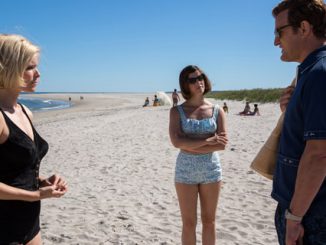The debate on the Baird Government’s plan to lease 49% of NSW poles and wires for around $10billion dollars, if it gets into government, is fraught with misguided statistics and a misplaced allegiance to an antiquated energy system. To some, it feels like a choice between voting for heavy-handed sweaty union boss or a greedy foreign investor, when the real issue we should be talking about is how soon can we get off the grid and have households running off renewable energy.
So what are poles and wires?
Electricity is generated by power stations (coal, gas, wind, solar or hydro) which are both privately and state owned, and distributed to substations through transmitters (those big industrial structures seen out in the suburbs, State owned by Transgrid). State owned distribution networks Ausgrid, Endeavour Energy and Essential energy pick up electricity from substations and ‘poles and wires’ then distribute the electricity to houses. The Premier plans to sell half of Ausgrid and Endeavour Energy, all of TransGrid, but not Essential Energy which delivers power to 95 per cent of the state.
Are poles and wires relevant to renewable energy future?
Yes and no. If the Federal government retains our renewable energy targets, feasibly, it will become more economical for investment in wind, solar and hydro to continue. Poles and wires are still needed to distribute this energy to households (regardless of whether it is coal, solar or whatever). If households become energy self-sufficient and solar batteries for households are affordable and efficient (as is predicted to occur over the next 5 years), ‘poles and wires’ become a redundant network.
If poles and wires are phased out because of renewable energy options, are ‘poles and wires’ still an asset?
No. They become a costly liability.
What is the fair market value for NSW’s “poles and wires” distribution network?
The premier has touted a figure of $10bn, but no one is really sure where this came from. It sounded like a good figure to be spending on infrastructure is probably a palatable “marketing” figure. We bill payers paid over $45 billion in network upgrades over the last 5 years (remember all those Ausgrid dudes digging up Norton St and King St). This infrastructure upgrade has since been proved to be completely unnecessary and waste of money. The networks had fudged their figures relating to peak usage and pocketed a nice $100 million a year. Ross Garnaut’s report accused the networks of “dodgy data” and gold plating the poles and wires. So if we have gold plated poles and wires, lets charge a gold price – $45 billion would be a good starting point. Would be great to have $45 billion dollars of infrastructure.
Will prices go up if the poles and wires are leased?
In theory no. NSW pays the most of all the states. In the five years to 2013, the average power bill rose 70% from $970 to $1660 a year. A report by Ernst & Young shows that Victoria’s privatised network charges fell 18 per cent in inflation-adjusted terms between 1996 and 2013. Over the same period, they rose 122 per cent in NSW.
Will we lose $1.7 billion dollars worth of annual profit?
Income from the networks is projected to slump to $945m in 2015-16, $936m in 2016-17 and $766m in 2017-18. Demand is falling and the new governing rules of the Australian Energy Regulator (AER) are more likely to reject price increases.
Should we lease?
Yes. The industry cannot reform if it stays under government ownership and prices will definitely increase as they have done every year.
For further reading, go to Jess Hill’s excellent article Power Corrupts in the Monthly, a bit old now, but still worth a read.
http://www.themonthly.com.au/issue/2014/july/1404136800/jess-hill/power-corrupts

